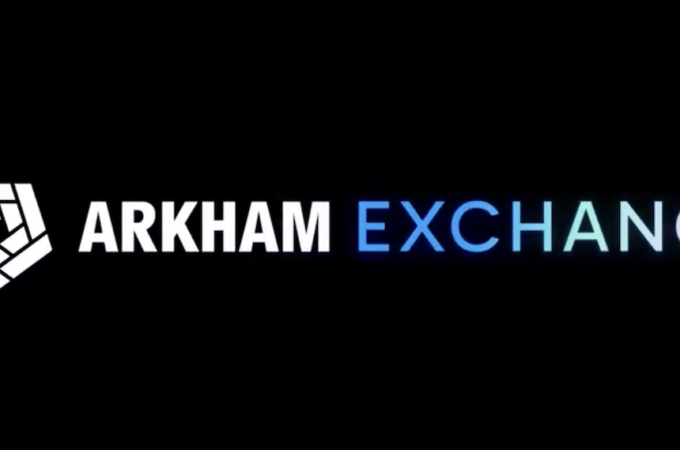
The Strongest Transformative Forces in the Insurance Industry
By Elena Mesropyan for LTP
No other industry has a bigger impact on the improvement of national welfare than insurance. In 2015, insurance premium volume worldwide reached $5.265 trillion, attracting ever-expanding attention to insurance business from across the field. In the years ahead, insurance landscape will no longer be an oligopoly as transformative forces will reach the level of impact enough to reimagine traditional business models. But what are those forces and how will they change insurance? An interesting opinion on the matter has been shared a week ago in the publication called Driving FinTech Innovation in Financial Services by Deloitte in collaboration with All Street, which emphasizes important external and internal forces that will impact general insurance landscape transformation, some of which we have notedbefore.
When discussing transformative forces in the insurance industry, it’s impossible to leave aside InsurTech, which completely reimagined traditional business models, insurance products and delivery channels. As new types of insurance have emerged, it became clear that the status quo will not remain stable for long and the dominance of big players at some point will be in question. The increasing popularity of tech-powered insurance solutions served a signal for institutional players to seek fresh ideas through collaboration, accelerator programs and investments.
But the uniqueness of transformation in the insurance industry is in cross-industrial impact – there are major outside forces tremendously affecting the future of insurance. Self-driving cars, the sharing economy, IoT, sensor technology, AI, distributed ledger technology, drones, mobile technology, etc., are all changing the way insurance is structured, consumed and provisioned in the future.
- The future could hold a market erosion combined with a shift to commercial policy ownership, which means that organizations will absorb a substantial share of liabilities associated with personal assets. Sharing economy platforms could serve an example of such shift since they already aggregate and represent individual customers’ insurance demand so that premiums are included in the per-usage fees customers pay.
- A new business model brought into the scene by technology startups, P2P insurance, also represents the shift with providers aggregating individual risks and representing them to institutional insurers.
- Self-driving cars and advanced driver-assisted systems (ADAS) could change who owns insurance policies, the research from Deloitte suggests. As the automotive industry eliminates the impact of human error with self-driving cars, the risks will be associated with the manufacturer rather than the driver, facilitating the shift in insurance policies. Furthermore, this next generation of vehicles will create new types of risks, such as cyber, that were not associated with auto policies traditionally.
- A different type of change will be related to the lengths of insurance policies as market demand begins to dictate product development. The shift of power is represented in new types of products, which are modular and specific to the time and use of an asset or a customer’s behavior. Pay-per-mile, per-as-you-go, insurance for a particular period of time/microinsurance – people will be opting for insurance when their property is in use or when they deem their risks are greater. Billing will change in turn, as premiums become variable and irregular rather than fixed, and billed on an annual or semi-annual basis.
It is already obvious to consumers that there is no need in paying for an annual flooding insurance when you have three very dry months a year, or for an annual travel insurance if you travel just for three weeks in a whole year. Nowadays,mobile applications enable people to buy micro-coverage on the spot with a few swipes on their phones.
- “Telematics sensors transmit activity so that underwriters can adjust premiums based on the customer’s specific habits or situation. Underlying it all are powerful analytics that can extract insights and trends from massive data volumes,” as noted in an earlier study.
Sensory technology is especially important in the light of the transition to usage-based insurance. Correct underwriting can have a significant effect on the policy terms and potential revenue of companies. Given the trends of moving from lifetime insurance to short-term and tailored insurance, it is especially important for companies to make the most accurate decision on the terms offered or risk to lose funds over unforeseen circumstances.
- The massive amount of data accumulated over time by sensory technology combined with machine learning capabilities will allow AI to make accurate forecasts based on historical data and detailed streams of current data. Underwriters will be able to play a significant role in developing new products, shaping tailored packages for different markets and define the pricing policy. Pricing then can be shifted from fixed to real-time and elastic, depending on the changing environmental conditions and the constantly changing personal data.
Moreover, given the strict regulatory environment in the insurance industry, AI can keep companies up to date on the latest regulatory implementations and “advise” insurance companies on policy development and pricing models. AI also has a potential to prevent expenses on claims over staged accidents based on historical data.
- Digital intermediaries and their technological evolution also have a significant impact on traditional players as they can improve customers’ ability to discover the right prices for their risk levels and create a standardized view of insurance products, driving commoditization of insurance policies, the study suggests.
- Moreover, as those intermediaries accumulate data on consumer needs and search parameters, they play a role of outsourced research and development arms for traditional carriers. The data accumulated by those companies can help insurance providers to innovative business models without putting their entire business operations at risk.
An example here is RiskMatch, which provides an array of portfolio management and placement solutions, analytics, internal and external benchmarking capabilities, and information management services designed to enhance performance, reduce costs, facilitate growth and improve client service.
- Speculations around blockchain technology are mostly happening in the financial sector, but the insurance industry is also expected to be largely influenced by the application of unique properties of distributed ledger.
“It [blockchain] may reduce the cost of premiums and claims given the ease and speed with which blockchain would manage very complex cases, which would reduce the cost of managing these claims to insurers and allow them to pass savings on to the customer.
“Combined with the IoT, blockchain systems can make parametric insurance in home and auto insurance possible so that claims can be automatically paid based on predetermined conditions. Blockchain also could facilitate automated premium payments, complex claims assessment and claims payments.”
- Mobile technology and the scale of connected devices are a whole another topic and probably one of the most transformative forces changing the face of insurance and delivery channels. Out of 28 billion connected devices forecasted by 2021, 16 billion will be related to IoT + by 2021, there will be 8.6 billion mobile phones globally. Both forecasts indicate an outstanding opportunity for insurers to reach potential clients wherever they are, just like some particularly savvy entrepreneurs are doing already by moving insurance into apps, while others are leveraging the power of social networks.
At the end, the importance of mobile technology and its increasing role in a range of everyday activities will force insurance companies to look for ways to connect and engage with their customers in the most convenient way. Chatbots, in this case, may play a vital role in the future, as they become more sophisticated and powerful in performing requests and communicating relevant to the customer information.
First appeared at LTP





